The Belted Kingfisher is one of approximately one hundred species of Kingfishers world-wide however it the only Kingfisher found commonly throughout the entire North American continent. It is an easily recognizable bird owing to its relatively large head and bill along with a shaggy looking crest. One of few birds that nests underground where it lives in a burrow dug out of the side of a river bank. Interestingly, it always burrows in an uphill direction such that in the event of flooding an air pocket is trapped at the top of the burrow allowing it to survive until the flood waters recede. Kingfisher tunnels have been recorded up to eight feet in length. Its diet consists of many things including crayfish, amphibians, small mammals, birds and even berries however it is primarily a fish specialist. The Belted Kingfisher perches above streams or hovers in flight above the water looking for fish to dive for.
For bird photographers, the Belted Kingfisher often appears on the top of what is euphemistically known as the nemesis list, or list of birds that has generated the most difficulty, frustration and angst to photograph. Although Belted Kingfishers are very common along rivers and streams in North America, they tend to be very skittish and don’t allow people close access, thus making them difficult to photograph. My good friend and fellow bird photographer Arni Stinnissen and I have enjoyed a friendly rivalry over the past few years to capture some quality images of Kingfishers, and most certainly Arni’s results have been far superior to mine as you can see in his Kingfisher Gallery. Last month, while vacationing in Florida, Deb & I had the opportunity to watch a Belted Kingfisher fish for about thirty seconds approximately one hundred feet from where we were standing on the shore of Lake Kissimmee. Fortunately I was able to get a few shots of the Belted Kingfisher diving. Although the distance from the bird precluded the quality of images one would like, they do capture the diving behaviour of the Kingfisher which is something rather unusual and I trust you will enjoy seeing.
The Kingfisher was hunting along the shoreline of the lake and as there were no perches in the area, she would hover about thirty feet above the water looking for fish.
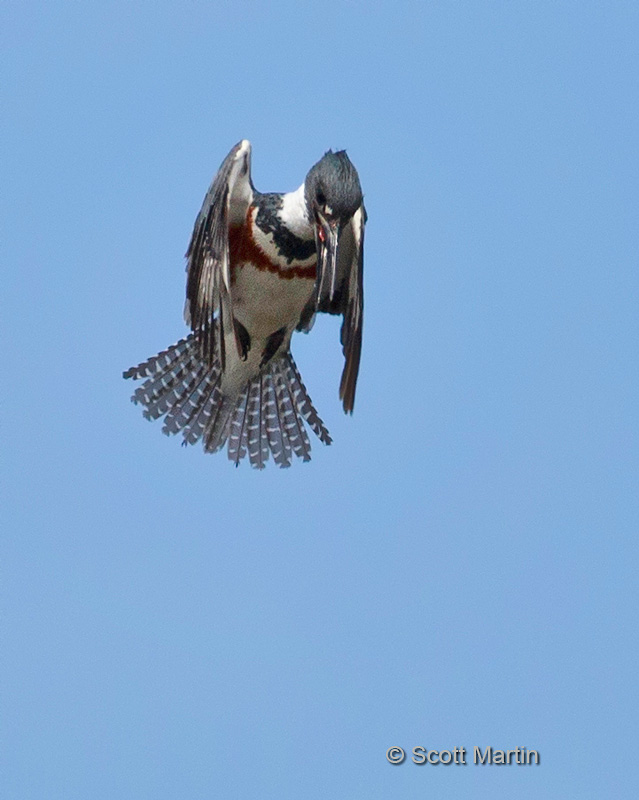
The female Belted Kingfisher is slightly larger than the male and is also one of the few species of bird where the female is more colourful than the male. The female is easily differentiated from the male by the rufus stripe across the chest below the slate blue belt that is found in both sexes.
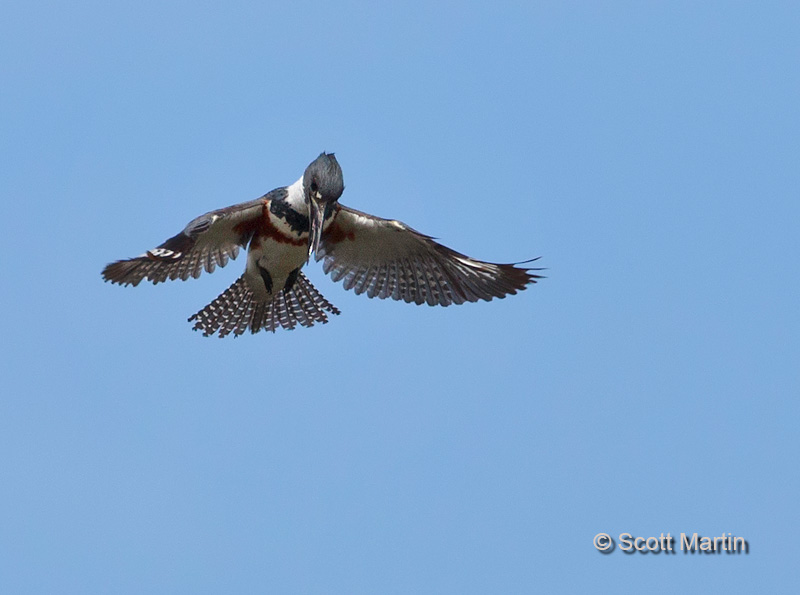
Once a fish is spotted the Kingfisher dives very quickly striking the water at a high rate of speed propelling it well below the surface.
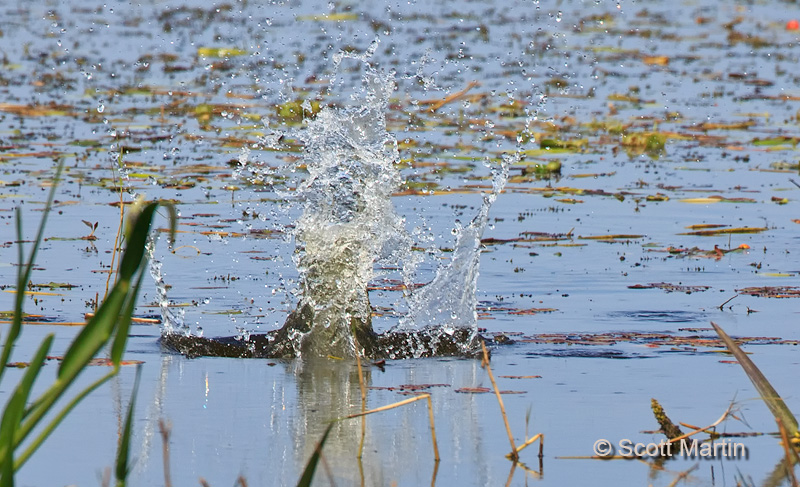
Note the clean lines of the entry zone, which will help make the next few slides make more sense as they record the Kingfisher launching itself out of the water at the end of its dive. Although I’ve seen Kingfishers dive many times before I had no idea how they launched themselves out of the water so the following images proved very educational. The next slide shows the appearance of the tail and wingtips as the Kingfisher prepares to use a strong wing beat to propel her body straight up out of the water. You can tell this is an exit shot by the waves around the impact zone and the seaweed in the air above the bird caused by the prior impact.

The energy expended to launch the bird vertically from the water must quickly exhaust the bird, so I doubt they can make many dives without a rest.
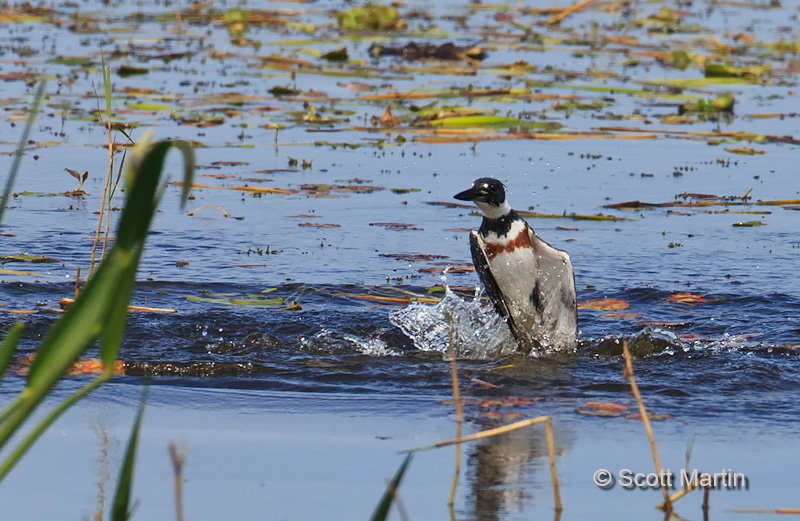
The vertical distance required must be high enough for the bird to take flight.
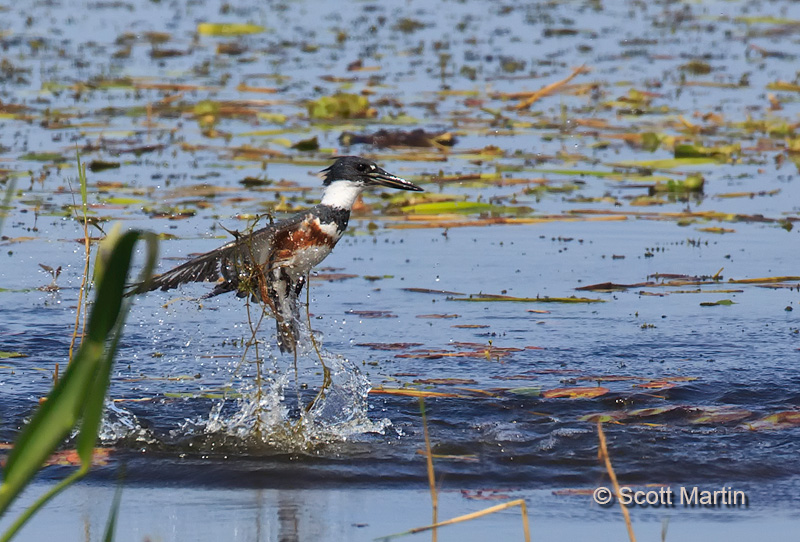
And off she goes, in this instance without any food.
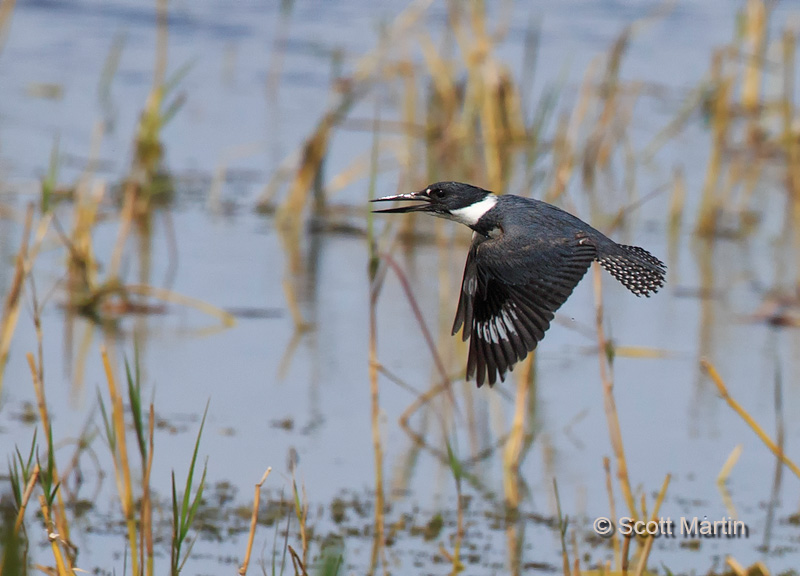
.
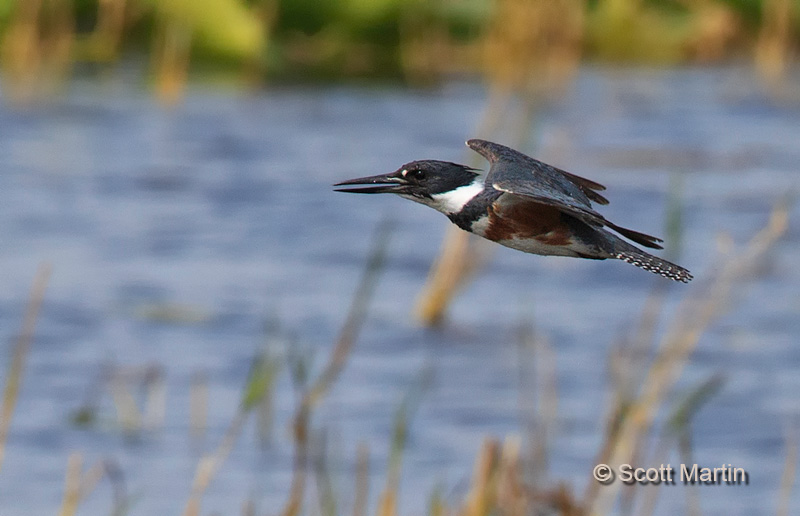
.
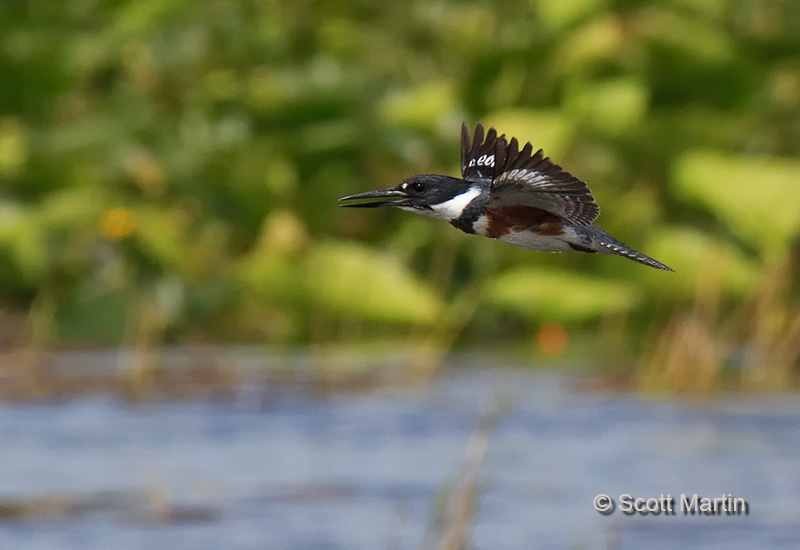
.

It was a blessing to be standing in the right place at the right time to record this Belted Kingfisher diving and as a result learn a little about how they ‘eject’ themselves from the water after a dive. It was also a pleasure to ‘kind of’ cross a longstanding bird off the nemesis list, not completely though, as I still need to get some print worthy images of this intriguing bird.
The above sequence was taken using a Canon 5D MkIII with a 500 mm f/4 lens, not a set-up typically used for birds in flight, however the 5D autofocus seemed to track the bird well.

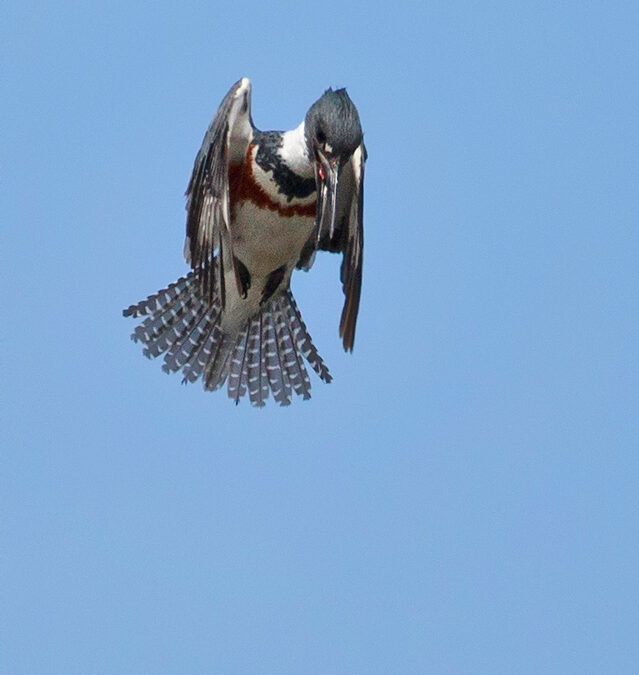
Wow Scott, what a fabulous set of shots. Have been just watching a documentary on geese in India where they travel up to 11,000 meters high to get to Northern India. To see a sequence like this always reminds me of how perfectly God created them. Similarly to the geese, obviously these guys are created and given the ability to fish & survive in a totally unique way. Thanks for sharing these shots. Truly wonderful shots. P.S. I’ll have to put my Mk111 on the 500 & see what I can get. Take Care!
Thanks Rob, you are absolutely right, just as it says in Psalm 19 “The heavens declare the Glory of God”. Its great to have a hobby that reminds of that every time we pick up a camera! You will enjoy the MkIII with the 500…the large files are great. The only draw back is the lower frame rate but as Arni reminded me, a 1Dx will solve that problem 🙂
This is a terrific sequence Scott. Photography is all about telling a story and you have most certainly achieved the objective here. I am also impressed that despite the lower frame rate of the 5DMKIII, you were still able to get a great action series. I hope this doesn’t undermine your case for getting a 1Dx. ;). Thanks for the plug and congrats on scratching yet another off your nemesis list!
Thanks Arni and you are right, at times like these the difference between 6 fps & 10 fps is huge… that’s why I ‘need’ 14 fps 🙂